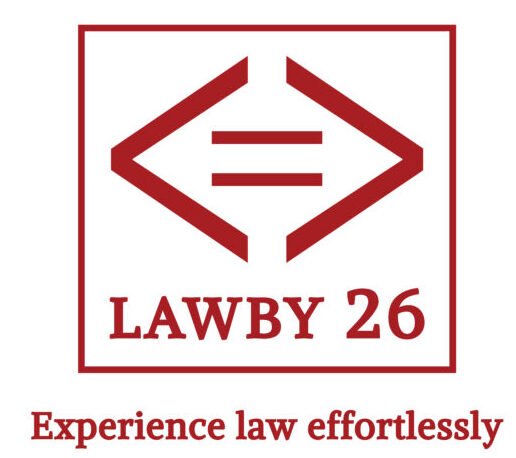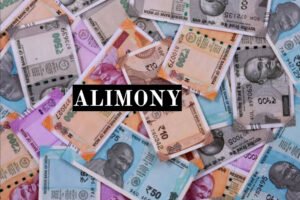Introduction
Blasphemy laws in India are a contentious subject, with the recent controversy involving Bollywood actor Ranbir Kapoor adding fuel to the debate (no pun intended). Kapoor got into legal trouble when a video from his family’s Christmas lunch became popular online. It showed him dousing a cake with alcohol and lighting it up while saying “Jai Mata Di.” This resulted in a complaint accusing him of hurting religious feelings and the filing of an FIR. The complainant claimed that Kapoor’s actions insulted Hindu beliefs.[1] While most of us might it absurd, such lawsuits are common in India. Let us examine the legal framework that enables such complaints to be filed.
Current Legal Framework
Section 295A of Indian Penal Code states, “Whoever, with the deliberate and malicious intention of outraging the religious feelings of any class of [citizens of India], [by words, either spoken or written, or by signs or by visible representations or otherwise], insults or attempts to insult the religion or the religious beliefs of that class, shall be punished with imprisonment of either description for a term which may extend to [three years], or with fine, or with both.”
Section 295A is often invoked along with section 153A of the Indian Penal Code which penalizes promoting enmity between different groups on grounds of religion, race, place of birth, residence, language, etc, and doing acts prejudicial to the maintenance of harmony and Section 505 of the IPC that punishes statements conducing to public mischief.
If someone engages in online speech that could lead to charges under Section 295A IPC, Section 66A of the Information Technology Act, which penalizes sending offensive messages through communication services, would be applicable. However, Section 66A of the Information Technology Act, 2000 was declared unconstitutional by the Supreme Court of India in Shreya Singhal v. Union of India, (2015) 5 SCC 1, due to its “vagueness” and infringement on free speech. As a result, it is no longer valid.
Recent legal developments
Section 299 of the Bharatiya Nyaya (Second) Sanhita, 2023 mirrors the IPC provision, emphasizing the consistent legal stance on blasphemy.
Historical context of blasphemy laws in India
The amendment to section 295 was a response to the Lahore High Court’s acquittal in 1927 of a case known as Rajpaul v Emperor, commonly referred to as the Rangila Rasool case, under Section 153A of the IPC. This case revolved around the publication of a tract called Rangila Rasool, containing scandalous references to Prophet Mohammed’s personal life. Despite acknowledging its offensiveness to the Muslim community, the Lahore High Court ruled that the writing couldn’t legally sustain prosecution under Section 153(A) because it didn’t incite enmity or hatred between religious communities. the judgment was so controversial that the publisher of the tract was murdered in court. The Muslim community’s outcry for a legal change resulted in the enactment of Section 295A.The Select Committee’s report before the enactment stressed that Section 295A aimed to punish those vilifying or attacking religions. It also highlighted that criticism, even if insulting, made in good faith to facilitate social reform, should not be penalized. Therefore, the Committee recommended inserting the words “with deliberate and malicious intention” into the Section. [2]
Blasphemy case laws in India
The Supreme Court in Ramji Lal Modi v. State of UP 1957 AIR 620 stated, “Section 295A only punishes the aggravated form of insult to religion when it is perpetrated with the deliberate and malicious intention of outraging the religious feelings of that class. The calculated tendency of this aggravated form of insult is clearly to disrupt the public order and the section, which penalises such activities, is well within the protection of clause (2) of Article 19 as being a law imposing reasonable restrictions on the exercise of the right to freedom of speech and expression guaranteed by Article 19(1)(a).”
The Supreme Court in In Mahendra Singh Dhoni vs. Yerraguntla Shyamsunder (2017) 3 MLJ (Crl) 92 (SC) reiterated the principle laid down in the Ramji Lal case and held that “Section 295A does not stipulate everything to be penalised and any and every act would tantamount to insult or attempt to insult the religion or the religious beliefs of class of citizens. It penalise only those acts of insults to or those varieties of attempts to insult the religion or religious belief of a class of citizens which are perpetrated with the deliberate and malicious intention of outraging the religious feelings of that class of citizens. Insults to religion offered unwittingly or carelessly or without any deliberate or malicious intention to outrage the religious feelings of that class do not come within the Section.”
However, In the Baragur Chandrappa v State of Karnataka (2007) 5 SCC 11 Para 22 case, the state government banned a Kannada novel called “Dharmakaarana.” This novel depicted a fictionalized version of Saint Basaveshwara’s life. The followers of Basaveshwara urged the ban, arguing that the book constituted hate speech due to the author’s suggestion of Basaveshwara’s nephew being born out of wedlock.
The Supreme Court upheld the ban noting that “no person has a right to impinge on the feelings of others on the premise that his right to freedom of speech remains unrestricted and unfettered. It cannot be ignored that India is a country with vast disparities in language, culture and religion and unwarranted and malicious criticism or interference in the faith of others cannot be accepted”.
Criticisms and Challenges
Subjectivity
Differentiating between genuine disagreement and purposeful targeting of religious beliefs is tough due to the subjective nature of what’s offensive. While the court has ruled in Ramlal Puri v State of Madhya Pradesh AIR 1971 MP 152, the Supreme Court said that the “test that is to be applied to such cases is not that of an abnormal or hypersensitive man, but that of an ordinary man of ordinary common-sense and prudence.” What constitutes abnormal or hypersensitive and ordinary common sense is subjective and differs from person to person.
Striking a balance means understanding where the limits are, especially with social media making things more complex where diverse opinions often blur what’s considered okay to say and what is not. Maintaining a delicate balance involves recognizing the boundaries, especially in the era of social media where diverse opinions often blur the lines of acceptability. The prevalence of offensive content, masquerading as free speech, further complicates matters, potentially escalating tensions.
Ambiguity
Section 295A suffers from significant ambiguity in its language. The utilization of broad and vague terms in the legislation frequently leads to misuse. The lower conviction rates for these provisions indicate that the process, wherein a police officer can arrest without a warrant, often becomes the de facto punishment.
Freedom of Speech vs. Religious Sentiments
With many Indians deeply valuing their religious beliefs, the legal protection against ridicule or mockery aimed at their religion or gods is warranted. However, it is important to keep in mind that this pursuit shouldn’t come at the cost of the constitutionally guaranteed right to free speech and expression. A possible solution is to distinguish between blasphemy and hate speech and to abolish the vague and subjective blasphemy laws that can be misused or abused.
[2] Insult to religion – Indian Express (archive.org)
Done By: Adithya Menon, 5th year B.A, LL.B(Hons.)
Veltech School of Law, Chennai
For Origin Law Labs



